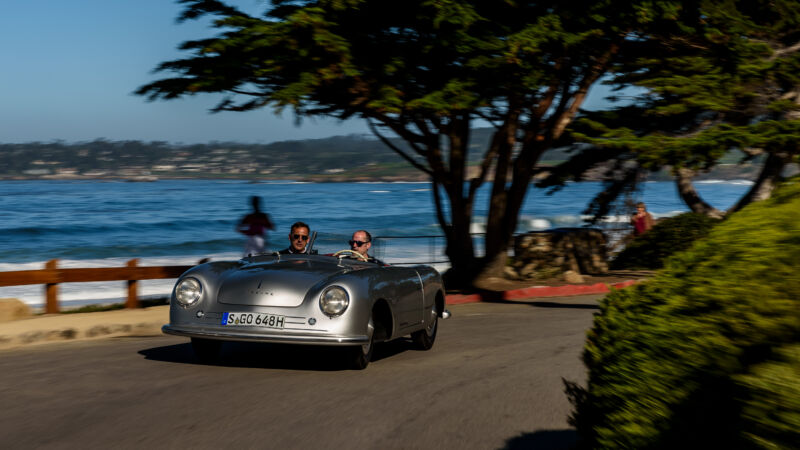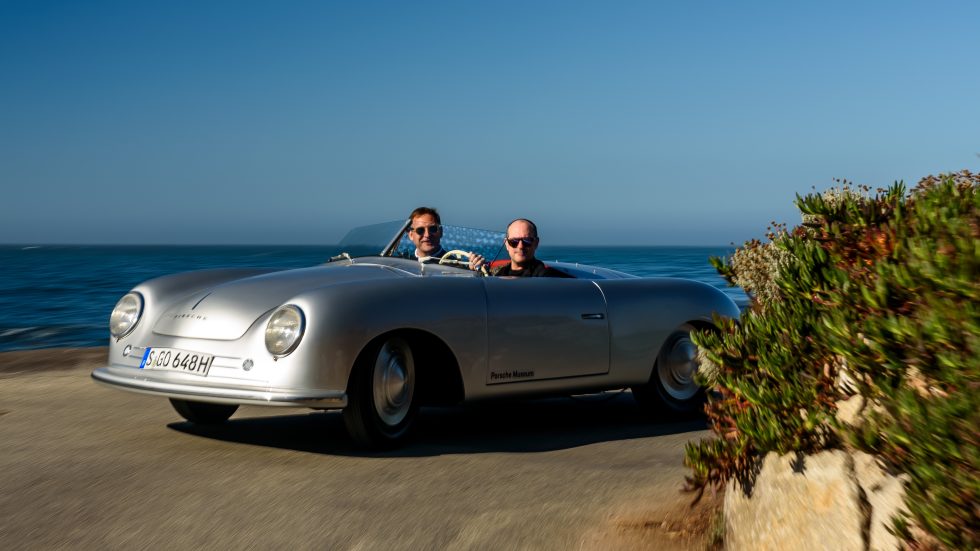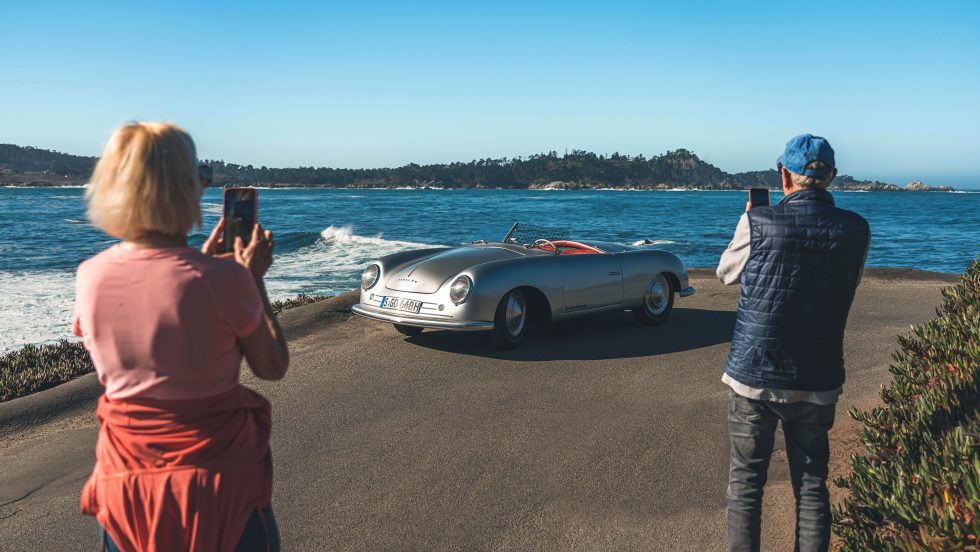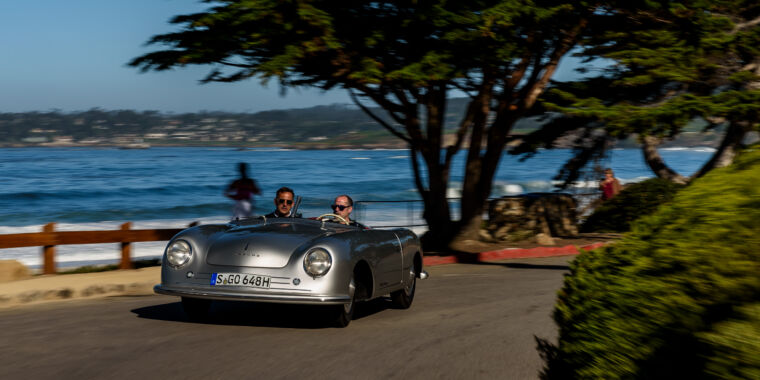
Tangent Vector/Porsche
CARMEL-BY-THE-SEA, Calif.—Every few years, Porsche holds a big celebration of its racing heritage at the Laguna Seca racetrack in Monterey, California. Called Rennsport Reunion, it’s a big deal, drawing a far bigger attendance than when racing series like IndyCar or IMSA visit. And attendees are a passionate crowd, prepared to wait in line for an hour or more just to visit the official merch store.
Rennsport Reunion 7 took place last week, and it was a special one, as this year is Porsche’s 75th anniversary. Among the cars brought over from the company museum was the very first to ever bear the Porsche name, the prototype 356/1 roadster.
And Porsche let us drive this priceless artifact.
You may be wondering why I’m not referring to the first car created by Ferdinand Porsche—the eponymous founder of the company. Readers with good memories will remember a piece from 2020 looking at the P1, built in 1898. But that car—a battery electric vehicle no less—was designed for the Egger-Loehner company.

Tangent Vector/Porsche
Ferdinand went on to design more vehicles for other makes, including Daimler-Benz in the 1920s, but he gained notoriety creating vehicles for the Nazi regime, including a heavy tank, Grand Prix racing cars for Auto Union, and the people’s car, which went on sale after World War II as the Volkswagen Type 1, or Beetle.
The first true Porsche—the first to bear the family name—was built in 1948, after both Ferdinand and his son Ferry Porsche spent time in prison as war criminals, following their arrests in France in 1945. What’s more, that first Porsche wasn’t even built in Germany, as Ferry Porsche was barred from returning to Stuttgart by the occupying authorities. The first 50 Porsches were built in Gmünd, Austria.
Following the Beetle, there was a single-seater racing car for Cisitalia, and while in prison, Ferdinand Porsche helped Renault design its 4CV. In the immediate post-war years, there was work on a small tractor, described as “the second pet idea” of Ferdinand Porsche. But by 1947, plans had crystalized around building a small VW-badged two-sear sports car.

Tangent Vector/Porsche
Working on the Cisitalia was an influence for this new machine. The racing car that Porsche designed for that Italian company used Fiat parts as its starting point to keep costs down, and for the new Porsche sports car, the decision was made to use the VW Beetle as its foundation, that car having gone into production in 1946 following the efforts of some British officers. The fact that Porsche was more than familiar with the design was not a coincidence.
Type 356
The new project was designated Type 356, with the design led by Ferry Porsche, now running the company, and head engineer Karl Rabe. The 356 used a tubular space frame chassis with an elegant roadster body designed by Erwin Komenda.
Porsche’s engineers took an existing 1.1 L VW flat-four engine and modified it—the intent was greater reliability, but the larger inlet valves and higher compression ratio (7.0:1 instead of 5.8:1) increased its output from 25 hp (19 kW) to 35 hp (26 kW) when using a single carburetor.
However, the engine and its gearbox were mounted in the opposite layout to the Beetle. In that car, the engine lives behind the rear axle, but for the 356, Porsche put the flat-four ahead of the axle, with the transmission behind it, for better weight distribution.

Tangent Vector/Porsche
That good work was undone somewhat by a consequence of that decision. The 356/1 needed to reuse the Beetle’s rear suspension, and the new orientation of the engine and transmission only made that possible if Porsche turned the rear suspension assembly around as well. So instead of trailing arm suspension, the 356/1 had leading arms. Additionally, the torsion bars that sprung those trailing arms were now located all the way at the rear.
The practice is virtually unheard of for road cars; as the rear wheels negotiate bumps or the car rolls, they toed out, causing oversteer and making the car hard to handle. (Yes, I am aware of the irony, Porschephiles.)
Much else was standard VW, too. The front suspension from the Beetle was welded to the front of the Porsche’s frame. The steering and drum brakes were Beetle, too.

